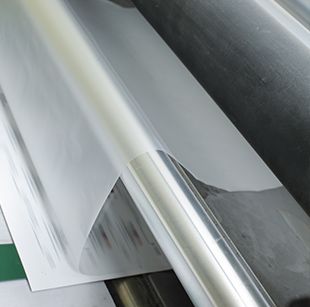What is cold lamination film and how does it differ from hot lamination?
When it comes to preserving and protecting documents, photos, or other materials, lamination is a popular choice. It involves encasing an item in a protective layer of plastic film to shield it from damage due to moisture, wear and tear, and UV radiation. Lamination can be done using two primary methods: cold lamination and hot lamination. In this article, we'll delve into what cold lamination film is and explore how it differs from hot lamination.
What is Cold Lamination Film
Cold lamination film also known as pressure-sensitive or self-adhesive lamination film, is a versatile protective solution commonly used for various applications. Unlike hot lamination, which uses heat to activate the adhesive and bond the film to the material, cold lamination relies on pressure-sensitive adhesives.
Here's how it works:
Adhesive Layer: Cold lamination film consists of three layers: a release liner (backing), an adhesive layer, and a transparent protective film. The adhesive layer is the key component that makes cold lamination unique. This adhesive is pressure-sensitive, meaning it adheres to surfaces upon the application of pressure, typically by using a laminator or a hand roller.
Application Process: To cold laminate a document or item, you first remove the release liner to expose the adhesive side. Then, you carefully align the material you want to laminate and apply pressure to ensure proper adhesion. This can be done manually or with the help of a cold laminating machine.
Versatility: Cold lamination film is suitable for a wide range of materials, including paper, photographs, posters, maps, and more. Its versatility makes it an excellent choice for preserving and protecting various documents and artwork.
Now, let's explore the key differences between cold lamination and hot lamination.
Differences Between Cold Lamination and Hot Lamination:
1. Temperature Requirement:
Cold Lamination: As the name suggests, cold lamination does not require heat. It can be applied at room temperature or even outdoors, making it suitable for delicate materials that may be damaged by heat.
Hot Lamination: Hot lamination, on the other hand, involves the use of heat to activate the adhesive. This process can be more complex and may not be suitable for heat-sensitive materials.
2. Speed and Convenience:
Cold Lamination: Cold lamination is generally quicker and more convenient. It doesn't require preheating or cooling down, making it a more straightforward process.
Hot Lamination: Hot lamination machines need time to reach the required temperature and may also need time to cool down after use. This can add to the overall lamination process time.
3. Cost:
Cold Lamination: Cold lamination film and machines are often more affordable than their hot lamination counterparts. This makes cold lamination a cost-effective choice for many users.
Hot Lamination: Hot lamination machines tend to be more expensive and may require additional maintenance due to the heat involved.
4. Material Compatibility:
Cold Lamination: Cold lamination is suitable for a wide variety of materials, including heat-sensitive documents, photographs, and inkjet prints.
Hot Lamination: Hot lamination is ideal for materials that can withstand heat, such as standard paper and cardstock. It may not be suitable for items that could warp or fade under heat.
In conclusion, lamination film offers a versatile and user-friendly solution for protecting and preserving documents and materials. Its adhesive properties, lack of heat requirement, cost-effectiveness, and compatibility with various materials make it a valuable choice for both personal and professional applications. Whether you're looking to protect important documents or enhance the durability of artwork, cold lamination film provides a reliable and accessible option for all your lamination needs.
More details please contact Yidu Technology
177
0
0



Comments
All Comments (0)